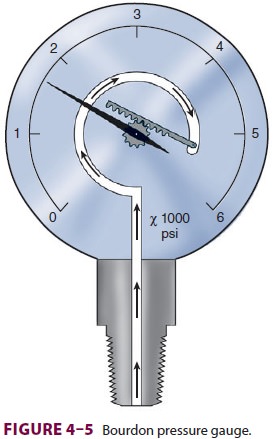Chapter: Clinical Anesthesiology: Anesthetic Equipment & Monitors : The Anesthesia Machine
Anesthesia Gas Supply

GAS SUPPLY
Most machines have gas inlets for
oxygen, nitrous oxide, and air. Compact models often lack air inlets, whereas other
machines may have a fourth inlet for helium, heliox, carbon dioxide, or nitric
oxide.Separate inlets are provided for the primary pipeline gas supply that
passes through the walls of health care facilities and the secondary cylinder
gas sup-ply. Machines therefore have two gas inlet pressure gauges for each
gas: one for pipeline pressure and another for cylinder pressure.
Pipeline Inlets
Oxygen and nitrous oxide (and often air) are deliv-ered from their central supply source to the operating room through a piping network. The tubing is color coded and connects to the anesthesia machine through a noninterchangeable diameter-index safety system (DISS) fi tting that prevents incor-rect hose attachment. The noninterchangeability is achieved by making the bore diameter of the body and that of the connection nipple specific for each supplied gas. A filter helps trap debris from the wall supply and a one-way check valve prevents ret-rograde flow of gases into the pipeline supplies. It should be noted that most modern machines have an oxygen (pneumatic) power outlet that may be used to drive the ventilator or provide an auxiliary oxygen flowmeter. The DISS fittings for the oxygen inlet and the oxygen power outlet are identical and should not be mistakenly interchanged. The approx-imate pipeline pressure of gases delivered to the anesthesia machine is 50 psig.
Cylinder Inlets
Cylinders attach to the machine via
hanger-yoke assemblies that utilize a pin
index safety system to prevent accidental connection of a wrong gas
cylinder. The yoke assembly includes index pins, a washer, a gas filter, and a
check valve that prevents retrograde gas flow. The gas cylinders are also color-coded
for specific gases to allow for easy identifica-tion. In North America the
following color-coding scheme is used: oxygen = green, nitrous oxide = blue,
carbon dioxide = gray, air = yellow, helium = brown, nitrogen = black. In the
United Kingdom, white is used for oxygen and black and white for air. The
E-cylinders attached to the anesthesia machine are

A high-pressure source of medical gases
and are generally used only as a back-up supply in case of pipeline failure.
Pressure of gas supplied from the cylinder to the anesthesia machine is 45
psig. Some machines have two oxygen cylinders so that one cylinder can be used
while the other is changed. At 20°C, a full cylinder contains 600 L of oxygen
at a pressure of 1900 psig, and 1590 L of nitrous oxide at 745 psig. Cylinder
pressure is usually measured byBourdon pressure gauge (Figure 4–5). A flexible tube
within this gauge straightens when exposed to gas pressure, causing a gear
mechanism to move a needle pointer.
Related Topics